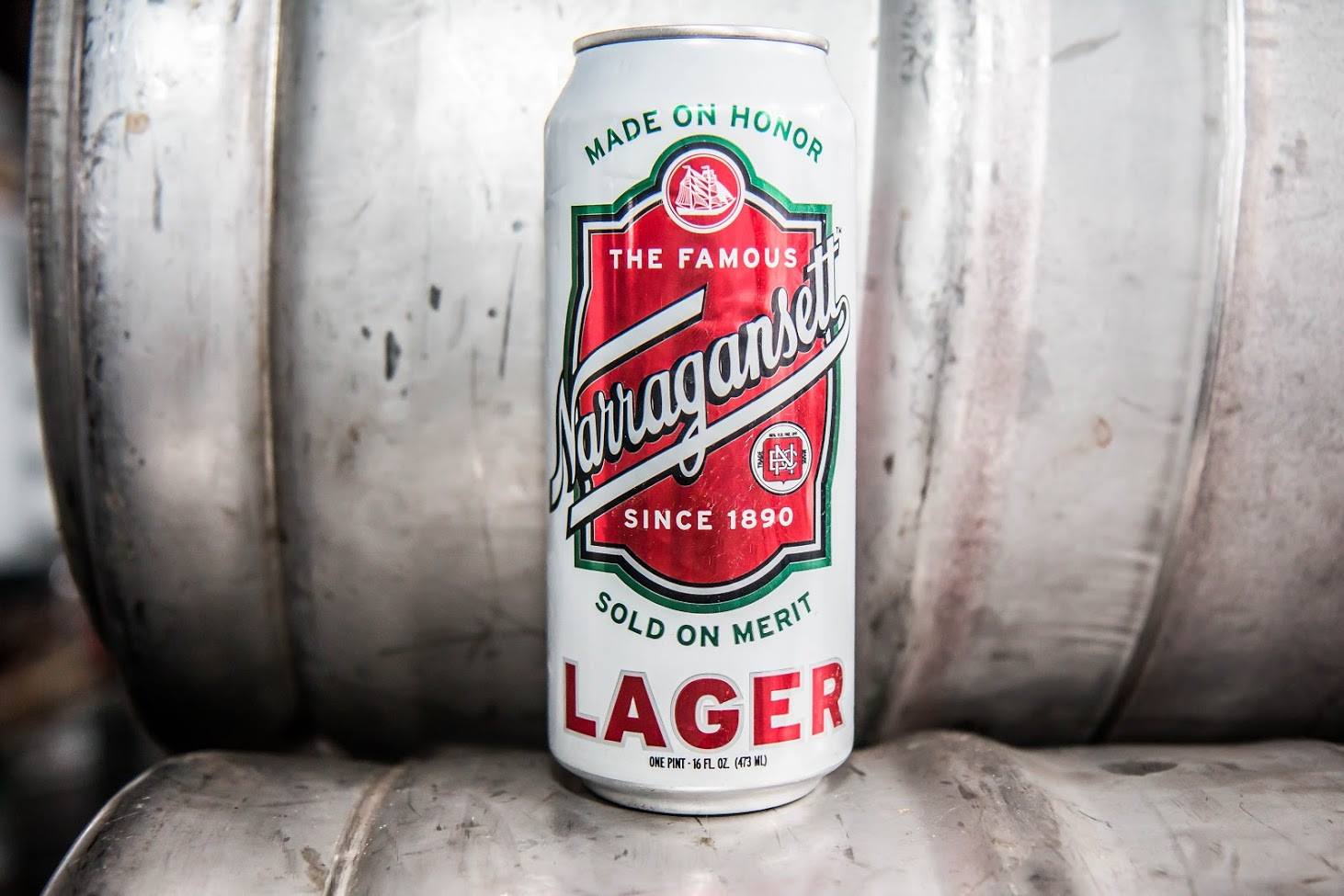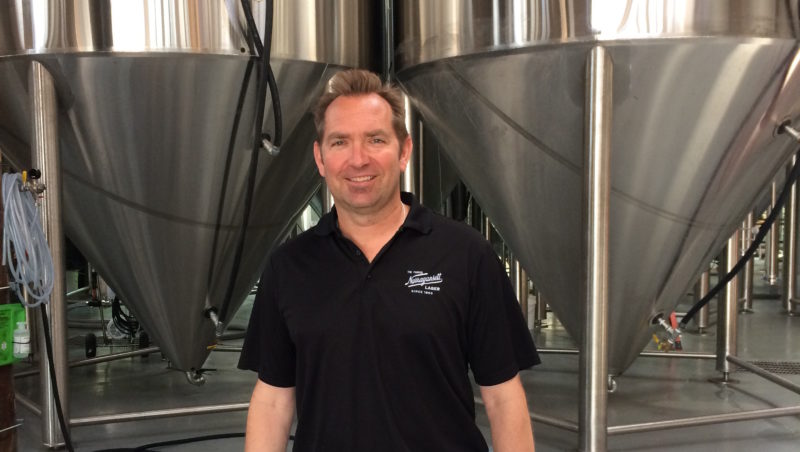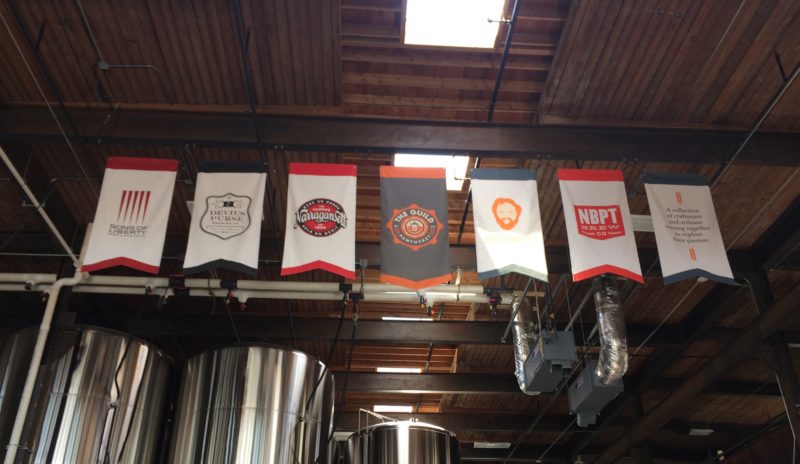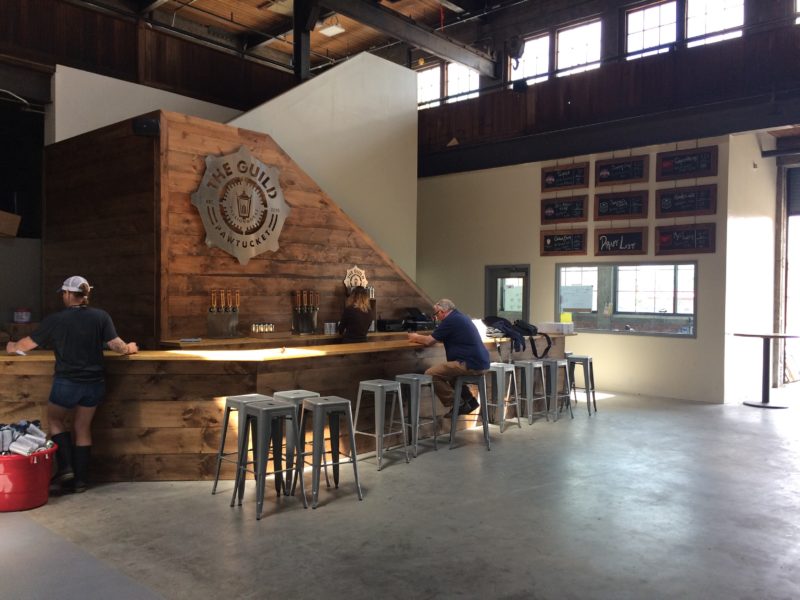


Founded in Cranston in 1890, Narragansett Brewing Company is a Rhode Island institution and shares a name with a town, a bay, and a local Native American tribe. Since we first came of age to legally hit the bars, my peers and I have ordered ‘Gansett tallboy lagers—largely thanks to the friendly local price of $2-$3 a can (still typical a decade and a half later) and the taste compared to competitors in the same price range.
This was a few years before Mark Hellendrung, a former juice executive, led a team of local investors to purchase the company in 2005. His reasons for doing so have been written about many times: while hanging out at a bar in Newport, RI, Mark would hear patrons recount their favorite tales involving Narragansett and what the beer has meant to them over the years. Its affable, welcoming “Hey Neighbor, Have a ‘Gansett!’” slogan actually translated into real-life interactions in local towns and communities, and ‘Gansett has long held an identity as a homegrown, neighborly libation.

He realized that the lager occupied a very real place in the hearts of Rhode Islanders, but that, since the brewery production had moved out of state in 1982, there had been a disconnect between operations and the brand’s identity. “It had this fate at the time that I felt it didn’t really deserve, coupled with independence and being local—all of that really mattered,” says Mark. From the time they purchased it, Mark’s team knew they wanted to find a way to bring the brewery back to Rhode Island.
Another priority was revamping the lager recipe, which they did with help from Bill Anderson, who was the last brewmaster in the Cranston location before it shut down and production moved out to Rochester, New York. Bill recently passed away, unfortunately, but a decade or so ago, he lent his expertise to developing a modified recipe that still embodied the taste and spirit of the original as much as possible. The classic Narragansett lager and light lager are still made in Rochester due to the facilities required, and as the company grew under its new leadership, the target of moving kept growing and having to be pushed back. Meanwhile, in 2011, The Brewers Association changed its definitions of craft beer based on certain ingredients that could or couldn’t be in it, which made it more encompassing; Narragansett lager could now officially count as a craft beer once more.
About three years into the new ownership, the brewery started experimenting with entirely new craft batches. Mark shared with me, however, that this was far from its first foray: Narragansett created a porter during the 1920’s and a bock around the time of Prohibition, just to name a couple. As America collectively moved into the craft realm several years ago, Mark says, “as a steward of that movement, you become a historian of sorts.” The brewery boldly ventured into IPA’s, pilsners, summer ales, bocks, porters, and even more exotic varietals, like its Del’s Summer Shandy made with Rhode Island’s trademark Del’s frozen lemonade, or its popular Lovecraft series honoring famed Providence horror author H.P. Lovecraft. The series started with a honey ale in early 2015 and most recently its seventh chapter, and altbier called The Temple.
Sometimes, finding that balance between the traditional lager and all of the craft varieties can be a fine line to walk; “it sometimes has people confused asking, ‘What are you? I don’t really get it,’” says Mark. “But I think the fact that we do these great craft beers helps to set our lager apart.”
The homecoming dream was finally realized a few months ago, when Narragansett opened its new Pawtucket brewing location as part of The Guild: a brewing collective which includes Narragansett as well as Sons of Liberty Beer & Spirits Co., Devil’s Purse Brewing Co., Farmer Willie’s Craft Ginger Beer, and Newburyport Brewing Co. The companies share equipment, rotating through the 300-barrel tanks and packaging line, as well as a spacious, open tasting area perfect for events.

“The best part? The cans come out ice cold,” Mark laughs, letting me hold one for a moment to see for myself. He’s not kidding.
Scalability and manageable growth are priorities, but it’s more than that: “Rhode Island is only about 20% of our business now, but that’s the one we watch more than anything else,” says Mark. “It’s cool that we sell a lot of beer down in Tennessee, but I’m much more concerned about how much we’re selling in Newport, Providence, Pawtucket—that’s home, and if you can’t make it here then the rest is all kind of secondary.”

The Guild was crucial in realizing the homecoming dream, which “was kind of the exclamation point on the project and really important for the authenticity of the brand. The sentiment was, ‘We’ve gotta be brewing here in Rhode Island again,’” Mark shares. Teaming up with other brewers not only eases overhead costs; it also “creates something really special: a community almost like a farmers’ market, which gets into the whole spirit of craft beer,” says Mark. “None of us could have created this on our own, but collectively we could. It’s a totally new company.”
“We’re staying homegrown,” Mark continues. “We’re not selling out to the big guys. Everyone working here is so passionate about it; you couldn’t ask for anything more.”
For more industry spotlights, sign up for your own free BevSpot community account to get notifications on the latest articles and gain access to our exclusive industry guides and tools.
